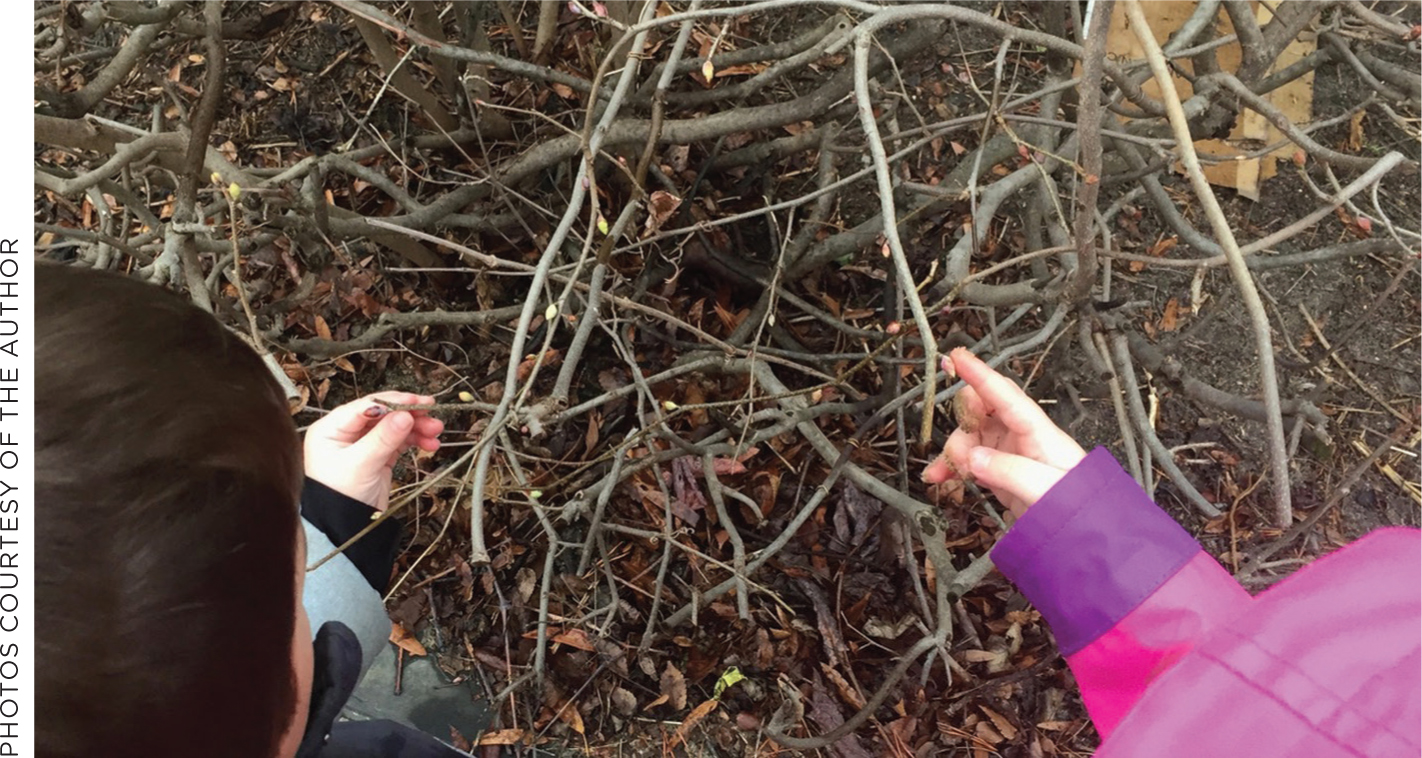The Early Years
Becoming Scientifically Literate
Science and Children—April/May 2020 (Volume 57, Issue 8)
By Peggy Ashbrook
All children should participate in an education that prepares them to make informed decisions (e.g., Should they run away from bees on flowers or quietly observe them?). Children’s educational experiences and dialogue with teachers should support their understanding of scientific knowledge and prepare them to evaluate explanations from others, such as, “chickens are not birds” or “don’t hold a worm because it will bite you.” Children who can evaluate explanations are on their way to being “scientifically literate”: having some understanding of scientific knowledge and the ability to analyze explanations and propose ways to investigate questions about natural phenomena (OECD 2019, pp.100–101).
Scientific literacy is having an understanding of what science is and how to use scientific information in daily decision making. (The combination of words might make us think of integrating literacy teaching and learning with science explorations—also important but not the focus of this column.) Educators support children’s developing scientific literacy so that we all have some knowledge about natural phenomena, can make informed decisions and evaluate claims, and can figure out how to answer our questions.

Brief daily observations reveal changes over time.
Being scientifically literate becomes even more important in adulthood when making crucial decisions. As adults, before taking an over-the-counter medicine we need to decide if our symptoms will be helped by the medicine. To inform our decision, we consider the messaging on the product packaging, information from a doctor or pharmacist, and prior experience with using medication to reduce symptoms. We think about which sources of information are trusted sources because they had accurate information in previous experiences or are based on research. To know if we are taking the correct dosage we also need to know measurements: our age and weight, how long it’s been since the last dose, and how to measure or count a dose. Every day adults make many informed decisions—such as whether to text while driving or have their children immunized—and evaluate explanations from others. Being scientifically literate helps us make decisions that are in our best interest.
To become scientifically literate, one has to “do science” (Zwicker 2015). To help children build their understandings of science and their ability to engage in science talk, offer explanations about natural phenomena and propose ways to answer questions scientifically. With these strategies, educators make sure children engage in many science experiences and investigations, have time to document and reflect on their work, and discuss what it means.
Collecting Science Data
Objective
Children experience science data collection as part of a BudBurst project to help them develop scientific literacy.
Both native and introduced species of cherry trees grow throughout North America and in many other places in the world. From dwarf sour cherry (Prunus x kerrasis) in Canada to Yoshino cherry (Prunus yedoensis) in Washington, D.C., to black cherry (Prunus serotina) in Texas, nearby cherry trees may be accessible for study.
- Before starting the activity, explore the Budburst website to familiarize yourself with the project’s goal of focusing attention on seasonal change and recording observational data to support science research in the field of phenology, the study of the timing of biological events such as plant flowering and leafing.
- Identify a cherry tree that children can observe weekly. If cherry trees are not available, choose another plant species or consider participating in another citizen science project (e.g., SciStarter).
- Plan how the children will make observations: What period of time will you need to walk to the tree and for children to make observations? What measuring and recording tools will children use to make and document their observations?
- On the walk to the tree, introduce the idea of finding signs of spring or other seasonal changes in living organisms and collecting data to share with working scientists.
- In follow-up discussions, have children share what they know about seasonal changes in the life of trees, why they think these changes might happen, and questions they have about tree life. Using dialogic reading, read a quality science trade book to show examples of documenting observations with drawings or photography and develop children’s ability to evaluate explanations (see NSTA Connection).
- Have children begin making and (with your help) recording weekly observations of the tree, including photography for the Budburst site and their own drawings. Enter the data into the Budburst website and post the photographs in the classroom.
After several weeks of making observations and entering data, view the posted photos and have children reflect on the changes they have observed. Ask them to predict what they think might happen in the coming weeks. Show children the data entered online to see how the observations they made are available for scientists’ use. If your children’s observations of a fruit tree interest them in finding out more about gardening or how their food is produced through farming, consider implementing some of the explorations in the Farm-to-School resource (Etter 2017).
Materials
- Access to a cherry tree or other plant outside
- BudBurst website (registration optional)
- Magnifiers
- Tools for documentation (writing/drawing tools, camera, tablet)
- Copy of downloaded BudBurst Life-cycle Reports (optional)
Peggy Ashbrook (scienceissimple@yahoo.com) is the author of Science Learning in the Early Years: Activities in PreK–2 and teaches preschool science in Alexandria, Virginia.
Literacy Early Childhood Preschool


